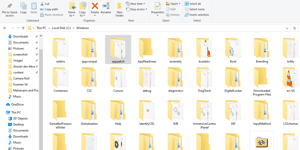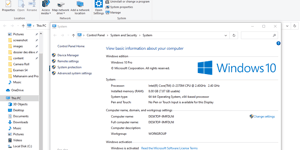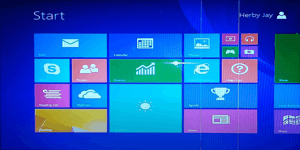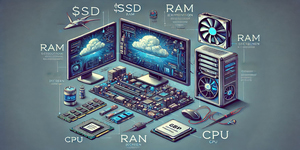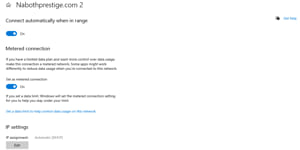Windows, the iconic operating system developed by Microsoft, has been a cornerstone of personal and professional computing for decades. It has played a central role in the evolution of technology, shaping how we interact with our computers and digital devices over time. From Windows 1.0 to the last version of Windows , this range of operating systems has consistently evolved, bringing new features, improved user interfaces, and enhanced performance. In this exploration, we’ll dive into the world of Windows, highlighting its impact on the technology landscape and its ongoing role in our digital lives.
With its user-friendly interface and versatility, Windows has become a familiar presence on billions of devices worldwide. Whether it’s powering workstations, laptops, tablets, or even gaming consoles, Windows has adapted to meet the diverse needs of users across the globe. Join us as we trace the remarkable journey of Windows, from its early days to its latest incarnation, and discover how it continues to shape the digital experiences of today and tomorrow.
Windows Operating Systems Evolution: From Windows 7 to Windows 11
The world of personal computing has been significantly influenced by Microsoft’s Windows operating systems. Over the years, Windows has evolved and adapted to meet the changing needs of users and technological advancements. In this article, we’ll take a closer look at the evolution of Windows, from the release of Windows 7 in 2009 to the latest Windows 11 ) introduced in 2021.
Windows 7 (2009): A Game Changer
In 2009, Microsoft launched Windows 7 , which was met with widespread acclaim. It was considered a substantial improvement over its predecessor, Windows Vista. One of the key reasons for this was the introduction of a more user-friendly interface and enhanced system stability. Windows 7 brought with it a visually pleasing interface, smoother navigation, and improved performance.
Windows 7 quickly gained popularity and became the go-to operating system for many users. However, its reign eventually came to an end when Microsoft ceased providing security updates in January 2020. Despite this, a significant number of users continued to rely on Windows 7. It’s worth noting that while some users held onto Windows 7, Microsoft recommended upgrading to a newer version for security reasons.
Windows 8/8.1 (2012/2013): A Radical Shift
With the release of Windows 8 in 2012, Microsoft took a bold step by introducing a dramatically different user interface. The most noticeable change was the introduction of dynamic tiles, a departure from the traditional Start menu that users had grown accustomed to. This transition proved to be challenging for many users who struggled to adapt to the new interface.
Windows 8.1 , released in 2013, aimed to address some of these concerns. It partially reintroduced the Start menu and made adjustments to enhance the overall user experience. Despite these efforts, Windows 8/8.1 did not receive the same level of enthusiasm as Windows 7. The new interface was a significant departure, and many users found it disorienting.
Windows 10 (2015): A Return to Familiarity
In 2015, Microsoft launched Windows 10 , which marked a return to the classic Start menu while introducing several new features. Windows 10 was designed as a unified platform for various devices, including PCs, tablets, and even Xbox gaming consoles. It brought notable improvements such as Cortana, Microsoft’s virtual assistant, and the introduction of Microsoft Edge, a new web browser.
One of the key strengths of Windows 10 was its stability. Users found it to be a reliable and familiar operating system, especially for those who had been using Windows 7. Additionally, Windows 10 introduced a concept of “Windows as a Service,” where Microsoft regularly provided updates and improvements to the operating system.
Windows 11 (2021): The Next Chapter
Fast forward to 2021, and Microsoft unveiled Windows 11 ), representing a significant evolution from Windows 10. Windows 11 was designed with a modernized user interface that featured rounded corners, centered taskbars, and a revamped Start menu. These visual changes were aimed at providing a fresh and contemporary look and feel.
But Windows 11 wasn’t just about aesthetics. It introduced new features and enhancements designed to improve productivity and gaming experiences. The Widgets Center made its debut, offering quick access to personalized information, and Windows 11 promised better integration with Microsoft Teams for seamless communication and collaboration.
One of the standout features of Windows 11 was its enhanced gaming support. With DirectX 12 Ultimate, gamers could expect improved graphics and performance. Microsoft’s commitment to gaming was further emphasized by the introduction of the Xbox app and features like Auto HDR for a more immersive gaming experience.
However, Windows 11 also came with higher hardware requirements, meaning that some older devices might not be eligible for the upgrade. This raised some concerns among users, especially those with older computers who were content with Windows 10.
The Windows Journey Continues
Windows has come a long way from its early versions to the latest Windows 11. Each iteration has brought its own set of innovations, challenges, and improvements. Windows 7 set a high bar with its user-friendly interface and stability, while Windows 8 introduced a radical shift that was met with mixed reactions.
Windows 10’s return to familiarity and focus on stability earned it widespread acceptance. Finally, Windows 11, with its modernized interface, productivity enhancements, and gaming improvements, represents the next step in the evolution of Microsoft’s iconic operating system.
As technology continues to advance, the Windows journey continues. Whether you’re a loyal Windows user or exploring alternatives, it’s clear that Windows has played a significant role in shaping the world of personal computing, and it will likely continue to do so in the future.
What about of Windows 12
Windows 12 could be the upcoming version of Windows, and if so, when it will be released, you will have all the details regarding its requirements, how to obtain it, how to install it, and how to use it.
While waiting for a new version of Windows, you can continue to master the latest available version, Windows 11 ), to make the most of it.
Keeping in mind all the requirements of Windows 11 for installation, let’s hope that a new version might bring even more requirements. You can already get a glimpse by comparing Windows with previous versions.
Share on:
